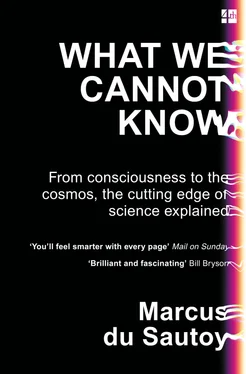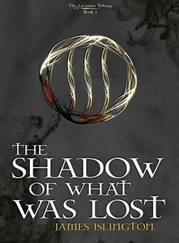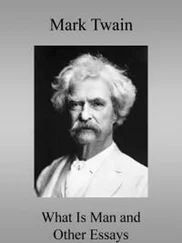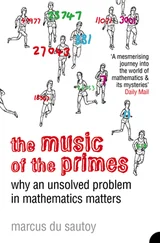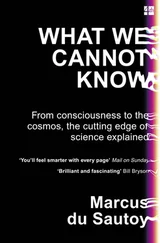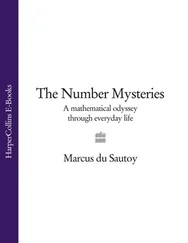1 ...7 8 9 11 12 13 ...25 So what of my lowly dice? Surely with the laws of motion at hand I can simply combine the geometry of the cube with the initial direction of motion and the subsequent interactions with the table to predict the outcome? I’ve written out the equations on my notepad and they look pretty daunting.
Newton too contemplated the problem of trying to predict the dice. Newton’s interest was prompted by a letter he received from Samuel Pepys. Pepys wanted Newton’s advice on which option he should back in a wager he was about to make with a friend:
(1) Throwing six dice and getting at least one 6
(2) Throwing twelve dice and getting at least two 6s
(3) Throwing eighteen dice and getting at least three 6s
Pepys was about to stake £10, the equivalent of £1000 in today’s money, and he was quite keen to get some good advice. Pepys’s intuition was that (3) was the more likely option, but Newton replied that the mathematics implied the opposite was true. He should put his money on the first option. However, it wasn’t his laws of motion and the calculus to which Newton resorted to solve the problem but the ideas developed by Fermat and Pascal.
But even if Newton could have solved the equations I’ve written out to describe the trajectory of the dice, there turned out to be another problem that could scupper any chance of knowing the future of my dice. Although Pascal was talking about his wager with God, there is an interesting line in his analysis which throws a spanner in the works when it comes to knowing the future: ‘Reason can decide nothing here. There is an infinite chaos which separated us.’
THE FATE OF THE SOLAR SYSTEM
If Newton is my hero, then French mathematician Henri Poincaré should be the villain in my drive to predict the future. And yet I can hardly blame him for uncovering one of the most devastating blows for anyone wanting to know what’s going to happen next. He was hardly very thrilled himself with the discovery, given that it cost him rather a lot of money.
Born a hundred years after Laplace, Poincaré believed, like his compatriot, in a clockwork universe, a universe governed by mathematical laws and utterly predictable. ‘If we know exactly the laws of nature and the situation of the universe at the initial moment, we can predict exactly the situation of the same universe at a succeeding moment.’
Understanding the world was Poincaré’s prime motivation for doing mathematics. ‘The mathematical facts worthy of being studied are those which, by their analogy with other facts, are capable of leading us to the knowledge of a physical law.’
Although Newton’s laws of motion had spawned an array of mathematical equations to describe the evolution of the physical world, most of them were still extremely complicated to solve. Take the equations for a gas. Think of the gas as made up of molecules crashing around like tiny billiard balls, and theoretically the future behaviour of the gas was bound up in Newton’s laws of motion. But the sheer number of balls meant that any exact solution was well beyond reach. Statistical or probabilistic methods were still by far the best tool to understand the behaviour of billions of molecules.
There was one situation where the number of billiard balls was reasonably small and a solution seemed tractable. The solar system. Poincaré became obsessed with the question of predicting what lay in store for our planets as they danced their way into the future.
Because the gravitational pull of a planet on another planet at some distance from the first planet is the same as if all the mass of the planet is concentrated at its centre of gravity, to determine the ultimate fate of the solar system one can consider planets as if they are just points in space, as Newton had done. This means that the evolution of the solar system can be described by three coordinates for each planet that locate the centre of mass in space together with three additional numbers recording the speed in each of the three dimensions of space. The forces acting on the planets are given by the gravitational forces exerted by each of the other planets. With all this information one just needs to apply Newton’s second law to map out the course of the planets into the distant future.
The only trouble is that the maths is still extremely tricky to work out. Newton had solved the behaviour of two planets (or a planet and a sun). They would follow elliptical paths, with their common focal point being the common centre of gravity. This would repeat itself periodically to the end of time. But Newton was stumped when he introduced a third planet. Trying to calculate the behaviour of a solar system consisting, say, of the Sun, the Earth and the Moon seemed simple enough, but already you are facing an equation in 18 variables: 9 for position and 9 for the speed of each planet. Newton conceded that ‘to consider simultaneously all these causes of motion and to define these motions by exact laws admitting of easy calculation exceeds, if I am not mistaken, the force of any human mind’.
The problem got a boost when King Oscar II of Norway and Sweden decided to mark his sixtieth birthday by offering a prize for solving a problem in mathematics. There are not many monarchs around the world who would choose maths problems as their way to celebrate their birthdays, but Oscar had always enjoyed the subject ever since he had excelled at it when he was a student at Uppsala University.
His majesty Oscar II, wishing to give a fresh proof of his interest in the advancement of mathematical science has resolved to award a prize on January 21, 1889, to an important discovery in the field of higher mathematical analysis. The prize will consist of a gold medal of the eighteenth size bearing his majesty’s image and having a value of a thousand francs, together with the sum of two thousand five hundred crowns.
Three eminent mathematicians convened to choose a number of suitable mathematical challenges and to judge the entries. One of the questions they posed was to establish mathematically whether the solar system was stable. Would it continue turning like clockwork, or, at some point in the future, might the Earth spiral off into space and disappear from our solar system?
To answer the question required solving the equations that had stumped Newton. Poincaré believed that he had the skills to win the prize. One of the common tricks used by mathematicians is to attempt a simplified version of the problem first to see if that is tractable. So Poincaré started with the problem of three bodies. This was still far too difficult, so he decided to simplify the problem further. Instead of the Sun, Earth and Moon, why not try to understand two planets and a speck of dust? The two planets won’t be affected by the dust particle, so he could assume, thanks to Newton’s solution, that they just repeated ellipses round each other. The speck of dust, on the other hand, would experience the gravitational force of the two planets. Poincaré set about trying to describe the path traced by the speck of dust. Some understanding of this trajectory would form an interesting contribution to the problem.
Although he couldn’t crack the problem completely, the paper he submitted was more than good enough to secure King Oscar’s prize. He’d managed to prove the existence of an interesting class of paths that would repeat themselves, so-called periodic paths. Periodic orbits were by their nature stable because they would repeat themselves over and over, like the ellipses that two planets would be guaranteed to execute.
The French authorities were very excited that the award had gone to one of their own. The nineteenth century had seen Germany steal a march on French mathematics, so the French academicians excitedly heralded Poincaré’s win as proof of a resurgence of French mathematics. Gaston Darboux, the permanent secretary of the French Academy of Sciences, declared:
Читать дальше
